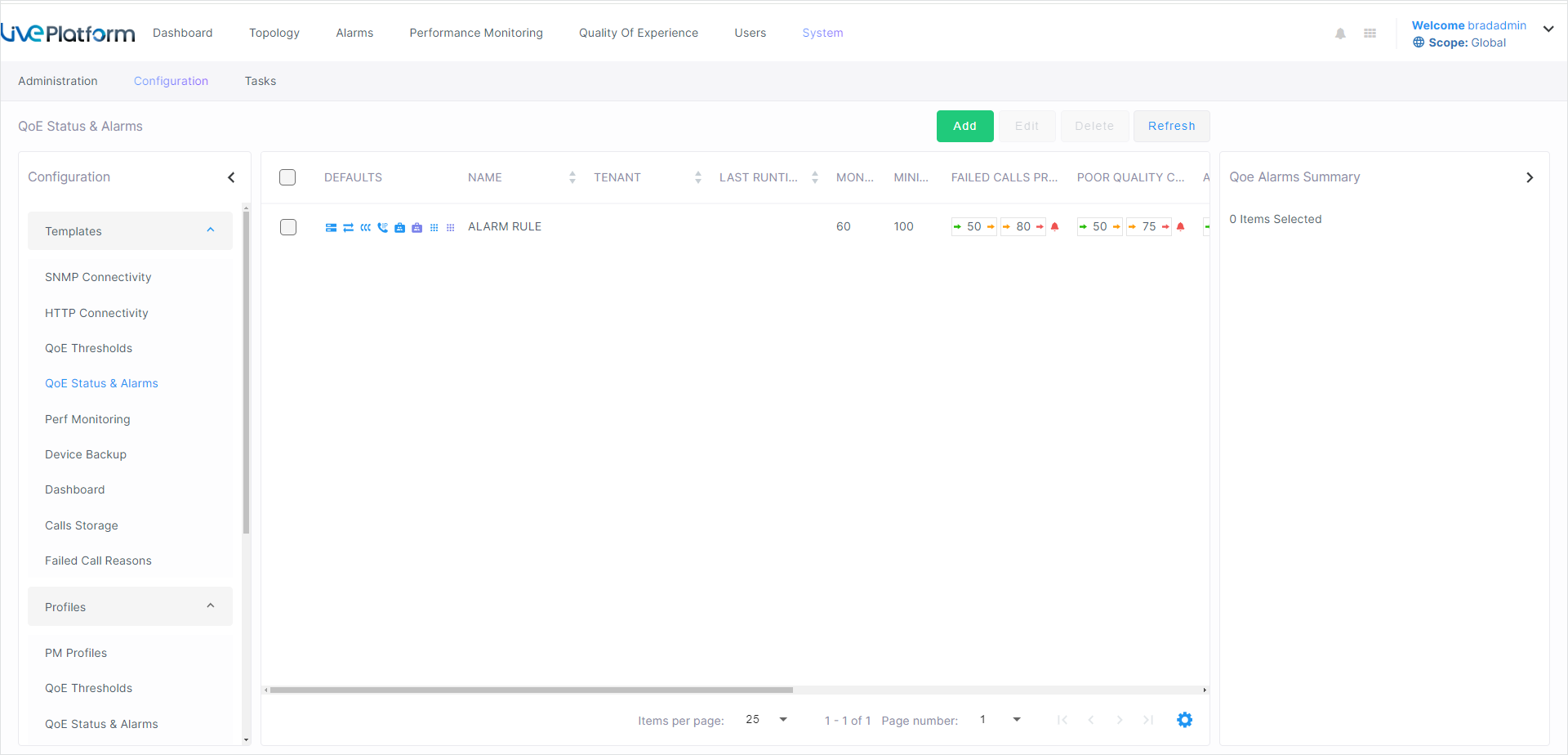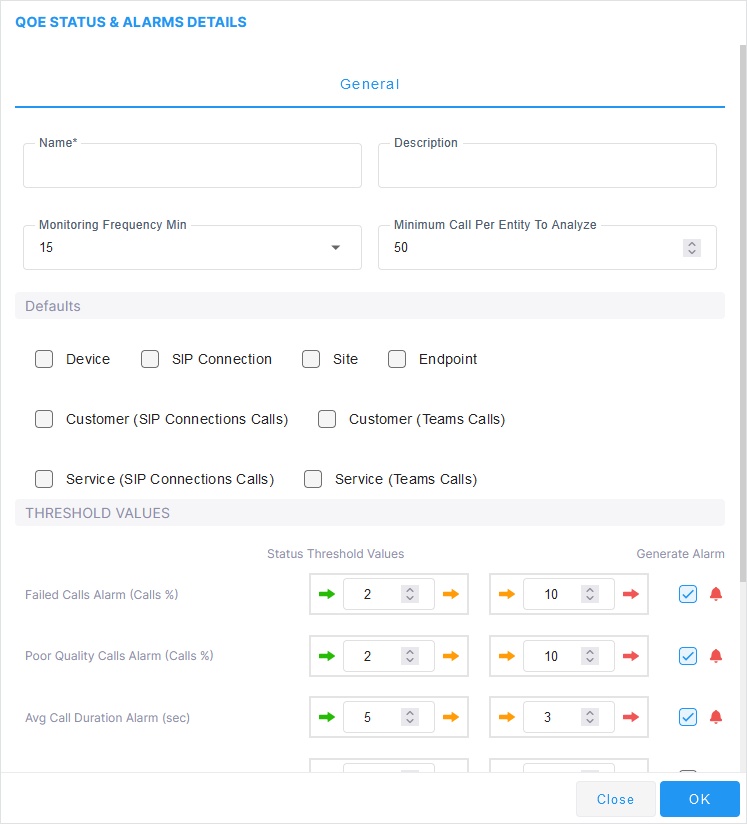Managing QoE Status and Alarms
You can set rules that determine when to raise Major and Critical alarms according to the Call grading level. For example, the Failed Calls Major alarm is raised when the configured threshold value reaches 2 and a Critical alarm is raised when the configured threshold value reaches 10.
When you add a new tenant, the defined templates are automatically added as profiles. In the example shown below, an Alarm rule is automatically added as a profile to the new tenant 'SBC Test' (you can compare the matching parameter settings in each figure). You can then customize these profiles according to customer requirements (see Managing QoE Status and Alarms).


| ➢ | To add Status and Alarms thresholds: |
| 1. | Access the Global (see Accessing Scopes). |
| 2. | Open the QoE Status and Alarms page (System > Configuration > Templates > QoE Status & Alarms). |

| 3. | Click Add. |


| 4. | Use the following table as a reference and then click OK to apply changes. |
|
Page Indications |
Description |
||||||||||||||||||||||||
|---|---|---|---|---|---|---|---|---|---|---|---|---|---|---|---|---|---|---|---|---|---|---|---|---|---|
|
Name |
Indicates the name of the alarm rule. |
||||||||||||||||||||||||
|
Last Runtime |
Indicates the last time the alarm rule was activated. |
||||||||||||||||||||||||
|
Monitoring Frequency Min |
Indicates at least how often monitoring is performed. |
||||||||||||||||||||||||
|
Minimum Calls per Entity to Analyze |
Indicates the minimum number of calls to analyze, per entity. Default: 50 |
||||||||||||||||||||||||
|
Defaults |
|
||||||||||||||||||||||||
|
Failed Calls (%) |
|
||||||||||||||||||||||||
|
Poor Quality Calls (%) |
|
||||||||||||||||||||||||
|
Average Call Duration (seconds) |
|
||||||||||||||||||||||||
|
Bandwidth Rule (Kbps) |
|
||||||||||||||||||||||||
|
Maximum Concurrent Calls Rule (#) |
|
||||||||||||||||||||||||
|
Failed Calls Device (Calls %) |
|
||||||||||||||||||||||||
|
Failed Calls 3rd Party (Calls %) |
|
 ).
). ).
). ).
).

 indicates that green changes to orange ('Major' severity) when the
indicates that green changes to orange ('Major' severity) when the  indicates alarm issued – displayed if the
indicates alarm issued – displayed if the